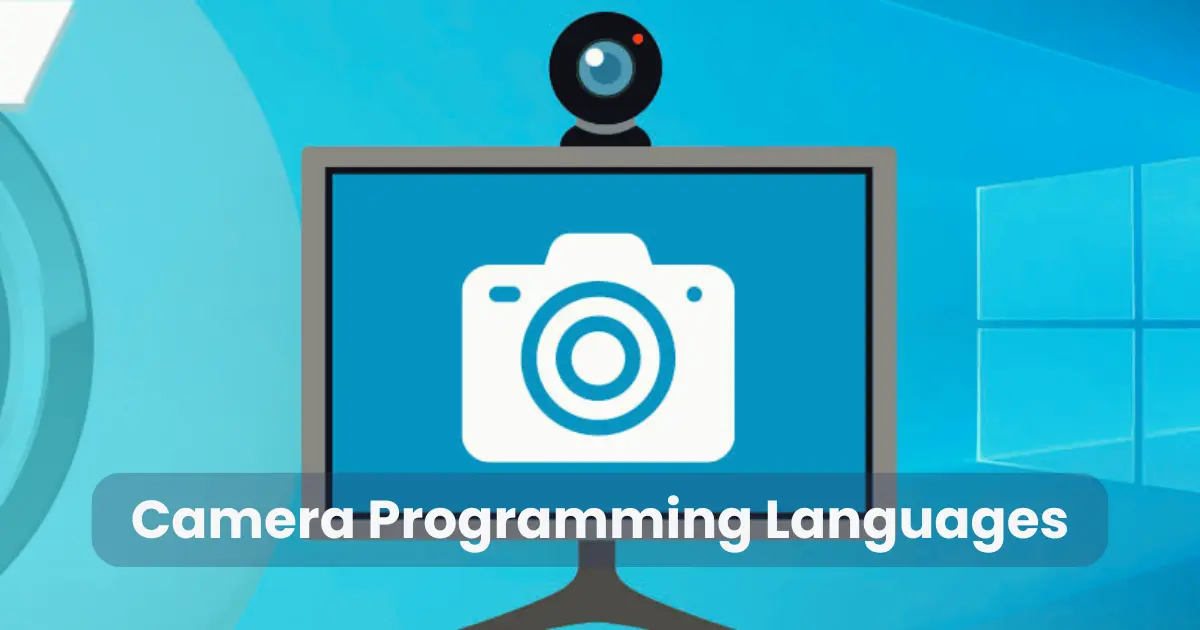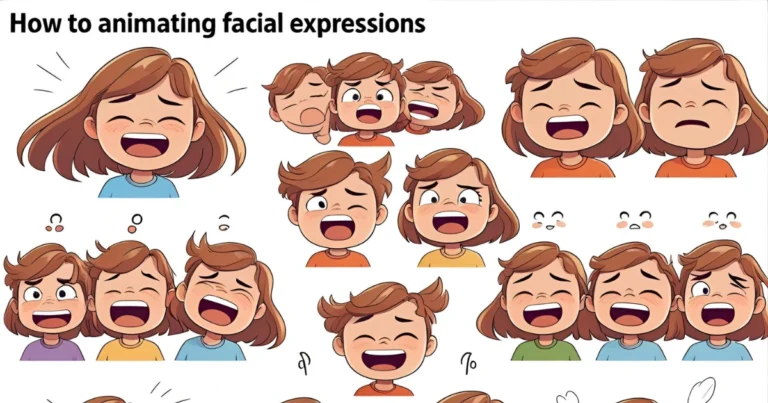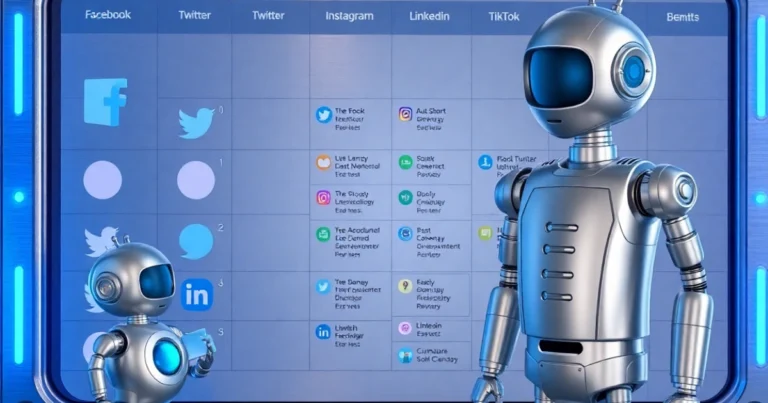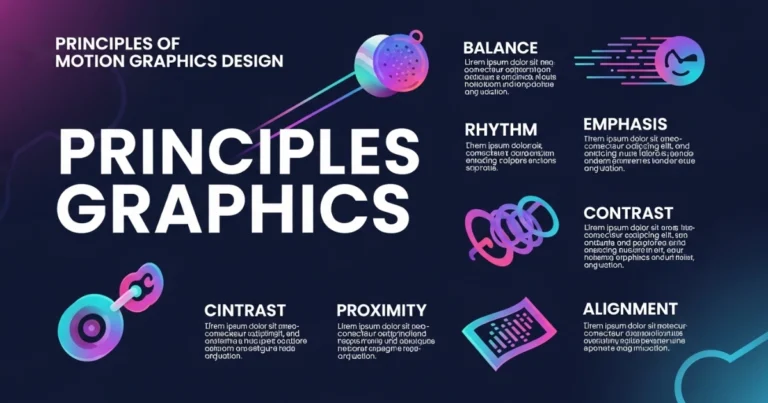Camera Programming Languages: Best Options for Developers

Contents
- 1 What Are Camera Programming Languages?
- 2 Why Are Camera Programming Languages Important?
- 3 Popular Camera Programming Languages
- 4 How to Choose the Best Camera Programming Language
- 5 Best Libraries and Frameworks for Camera Programming
- 5.1 1. OpenCV (C++, Python, Java)
- 5.2 2. Media Foundation (C++, C#)
- 5.3 3. DirectShow (C++, C#)
- 5.4 4. GStreamer (C, C++, Python, Rust, Java)
- 5.5 5. PyCamera (Python)
- 5.6 6. Vision API (Google Cloud, Python, Java, Go, Node.js)
- 5.7 7. ARKit (Swift) & ARCore (Java, Kotlin)
- 5.8 Choosing the Right Library for Your Project
- 6 Applications of Camera Programming Languages
- 6.1 1. Computer Vision and Image Processing
- 6.2 2. Surveillance and Security Systems
- 6.3 3. Augmented Reality (AR) and Virtual Reality (VR)
- 6.4 4. Mobile Camera Applications
- 6.5 5. AI-Powered Camera Applications
- 6.6 6. Industrial Automation and Robotics
- 6.7 7. Embedded Systems and IoT
- 6.8 Choosing the Right Camera Programming Language for Your Application
- 7 Future of Camera Programming Languages
Camera programming languages play a crucial role in developing applications that interact with camera hardware, process images, and implement computer vision. Whether working on real-time surveillance, augmented reality, or photography software, selecting the right camera programming language ensures optimal performance. Understanding the best options helps developers build efficient and scalable solutions.
With the increasing demand for AI-driven image processing, camera programming languages have become essential in various industries. From facial recognition to automated quality control, these languages provide the foundation for integrating cameras into software applications. Choosing the right programming language depends on factors such as speed, compatibility, and available libraries.
What Are Camera Programming Languages?
Camera programming languages are coding languages used to interact with camera hardware, capture images, process video streams, and implement computer vision algorithms. These languages enable developers to access camera sensors, control exposure settings, and apply real-time image processing techniques.
By using camera programming languages, developers can build applications for various industries, including security, healthcare, robotics, and augmented reality. These languages provide the necessary tools to communicate with camera APIs, optimize image processing workflows, and enhance visual data analysis.
Most camera programming languages support external libraries and frameworks, such as OpenCV, TensorFlow, and DirectShow, to simplify development. The choice of programming language depends on the application’s requirements, hardware compatibility, and performance needs.
Why Are Camera Programming Languages Important?
Camera programming languages are essential because they enable developers to create applications that interact with cameras, process visual data, and enhance image-based functionalities. With the increasing reliance on digital imaging across multiple industries, choosing the right camera programming language directly impacts performance, efficiency, and scalability.

1. Enhancing Computer Vision and AI Applications
Many artificial intelligence (AI) and machine learning (ML) applications rely on camera programming languages to analyze images, detect objects, and recognize faces. Fields like autonomous vehicles, surveillance, and medical imaging require precise image processing, which is only possible with well-optimized programming languages.
2. Supporting Real-Time Image Processing
In applications such as security monitoring, augmented reality (AR), and industrial automation, cameras must process images in real time. High-performance camera programming languages like C++ and Rust allow developers to achieve fast frame rates, reducing latency and improving responsiveness.
3. Enabling Cross-Platform Compatibility
Developers often need to build camera-based applications for multiple platforms, including desktops, mobile devices, and embedded systems. Some camera programming languages, such as Python and Java, offer cross-platform support, making it easier to develop versatile applications that work across different operating systems.
4. Optimizing Hardware Integration
Different cameras, from webcams to high-end industrial sensors, require specific drivers and APIs. Using the right camera programming language ensures seamless hardware integration, enabling applications to access camera settings, control exposure, and manage focus dynamically.
5. Expanding Industry Applications
From healthcare to entertainment, various industries benefit from camera programming languages. For example:
- Healthcare: Medical imaging and diagnostics rely on high-precision camera software.
- Automotive: Self-driving cars use advanced camera programming for lane detection and obstacle avoidance.
- Gaming and AR: Virtual reality (VR) and AR applications require real-time camera input for immersive experiences.
By leveraging the right camera programming language, developers can build high-performance applications tailored to industry-specific needs. The selection of programming languages impacts how efficiently a system can process images, interpret visual data, and interact with external devices.
Popular Camera Programming Languages
Several camera programming languages are widely used for developing applications that interact with cameras, process images, and implement computer vision algorithms. The choice of a programming language depends on factors such as performance, ease of use, and hardware compatibility. Below are the most popular camera programming languages and their key features.

1. C++
C++ is one of the most commonly used camera programming languages due to its high performance and extensive library support. It is widely used in computer vision, real-time image processing, and AI-based camera applications.
Key Features:
- High-speed execution for real-time processing
- Supports OpenCV, one of the most powerful image processing libraries
- Direct access to camera hardware and memory management
2. Python
Python is a popular camera programming language because of its simplicity and extensive libraries for image processing and computer vision. It is commonly used in AI-powered applications, machine learning, and automation.
Key Features:
- Easy to learn and implement
- Supports OpenCV, TensorFlow, and PyTorch for image analysis
- Ideal for prototyping and rapid development
3. Java
Java is a widely used camera programming language for Android development and enterprise applications. Many mobile apps rely on Java to handle camera functions.
Key Features:
- Platform-independent and works well across multiple devices
- Strong support for Android camera APIs
- Secure and stable for large-scale applications
4. C#
C# is a great choice for developing camera applications in Windows environments and Unity-based game development. It is often used in AR and VR applications.
Key Features:
- Well-integrated with DirectShow and Media Foundation
- Used in game development for AR/VR with Unity
- Works well with Windows-based camera applications
5. Rust
Rust is gaining popularity as a camera programming language due to its memory safety and high performance. It is used in real-time image processing and embedded camera systems.
Key Features:
- Safe memory management, reducing runtime errors
- High-performance execution for low-latency applications
- Suitable for embedded camera systems and robotics
Each camera programming language has its own strengths, making it suitable for different types of applications. The choice depends on the specific project requirements, including performance, ease of development, and available frameworks.
How to Choose the Best Camera Programming Language
Selecting the best camera programming language depends on several factors, including project requirements, hardware compatibility, and performance needs. Since different applications demand different functionalities, developers must evaluate their options carefully. Below are the key factors to consider when choosing the ideal camera programming language for a project.

1. Performance and Speed
For applications requiring real-time image processing, such as surveillance systems or autonomous vehicles, speed is crucial. Languages like C++ and Rust offer high performance and low latency, making them ideal for real-time camera applications.
Best Choice: C++, Rust
2. Ease of Development
If rapid development and ease of use are priorities, a high-level language like Python is a great option. It provides extensive libraries for camera programming and is easier to write and debug compared to lower-level languages.
Best Choice: Python, Java
3. Cross-Platform Compatibility
For applications that need to run across multiple operating systems and devices, selecting a camera programming language with cross-platform support is essential. Java and Python are excellent choices due to their portability and compatibility with different platforms.
Best Choice: Java, Python
4. Library and API Support
A programming language with strong library and API support makes camera integration easier. Libraries like OpenCV (for Python, C++, Java), DirectShow (for C#), and Media Foundation (for C# and C++) simplify the development of camera-based applications.
Best Choice: Python (OpenCV), C++ (OpenCV), C# (DirectShow, Media Foundation)
5. Hardware Integration
Some applications require direct access to hardware components, such as camera sensors and image processing chips. C++ and Rust provide better control over hardware, allowing developers to fine-tune settings like exposure, focus, and white balance.
Best Choice: C++, Rust
6. Application Type
Different applications require different programming languages based on their complexity and use case:
| Application Type | Recommended Language |
| Mobile Camera Apps | Java, Kotlin |
| AI & Machine Learning | Python, C++ |
| Game Development (AR/VR) | C#, C++ |
| Real-Time Surveillance | C++, Rust |
| Embedded Systems | Rust, C++ |
Final Decision: Which Language Should You Choose?
- If performance is the top priority → C++ or Rust
- If ease of development matters → Python or Java
- If working with mobile applications → Java or Kotlin
- If developing Windows-based applications → C#
- If working on AI-powered camera applications → Python or C++
By evaluating these factors, developers can select the best camera programming language for their project, ensuring optimal performance, scalability, and ease of development.
Best Libraries and Frameworks for Camera Programming
Using the right libraries and frameworks simplifies the development of camera-based applications. These tools provide built-in functions for image capturing, processing, and analysis, reducing development time and improving efficiency. Below are some of the best libraries for different camera programming languages.

1. OpenCV (C++, Python, Java)
OpenCV (Open Source Computer Vision Library) is one of the most widely used libraries for camera programming and image processing. It supports multiple camera programming languages, making it a versatile choice for developers.
Key Features:
- Image capturing, filtering, and face recognition
- Supports real-time image processing
- Compatible with Python, C++, and Java
2. Media Foundation (C++, C#)
Microsoft’s Media Foundation is a powerful API for handling media processing in Windows applications. It is commonly used in applications that require high-quality video recording and streaming.
Key Features:
- Provides direct access to camera hardware
- Supports high-performance video encoding and decoding
- Best for Windows-based applications
3. DirectShow (C++, C#)
DirectShow is a multimedia framework that helps developers build camera applications for video capturing and processing. It is mainly used for Windows applications.
Key Features:
- Efficient video streaming and recording
- Works well with various camera devices
- Supports advanced video effects
4. GStreamer (C, C++, Python, Rust, Java)
GStreamer is an open-source multimedia framework that supports video and audio streaming. It is widely used in real-time video applications.
Key Features:
- Cross-platform compatibility (Linux, Windows, macOS)
- Supports hardware acceleration for better performance
- Used in video editing, streaming, and conferencing applications
5. PyCamera (Python)
PyCamera is a Python library designed specifically for Raspberry Pi cameras. It is commonly used in embedded camera applications and IoT projects.
Key Features:
- Lightweight and optimized for Raspberry Pi
- Supports real-time image and video capturing
- Simple API for easy integration
6. Vision API (Google Cloud, Python, Java, Go, Node.js)
Google’s Vision API is a cloud-based tool that enables AI-powered image recognition and analysis. It works well for applications requiring advanced computer vision features.
Key Features:
- Cloud-based image processing
- Supports face, text, and object detection
- Works with multiple programming languages
7. ARKit (Swift) & ARCore (Java, Kotlin)
Apple’s ARKit and Google’s ARCore are frameworks designed for augmented reality applications that use camera input to enhance the user experience.
Key Features:
- Enables AR-based camera applications
- Supports motion tracking and object detection
- Best for iOS (ARKit) and Android (ARCore)
Choosing the Right Library for Your Project
The best library depends on the programming language and project requirements:
| Requirement | Recommended Library | Best Language |
| General image processing | OpenCV | Python, C++, Java |
| Windows-based applications | Media Foundation, DirectShow | C++, C# |
| Video streaming applications | GStreamer | C, C++, Python |
| Raspberry Pi camera projects | PyCamera | Python |
| Cloud-based AI image analysis | Vision API | Python, Java |
| Augmented reality applications | ARKit (iOS), ARCore (Android) | Swift, Java |
By selecting the right library, developers can optimize their applications, reduce development time, and enhance camera-based functionalities.
Applications of Camera Programming Languages
Camera programming languages play a crucial role in various industries, enabling applications that range from security surveillance to augmented reality. The choice of programming language depends on the complexity and performance needs of the application. Below are some of the most common applications of camera programming languages across different domains.

1. Computer Vision and Image Processing
Computer vision applications rely heavily on camera programming languages to analyze and interpret images or videos. These applications are used in:
- Facial recognition (security systems, smartphones)
- Object detection (autonomous vehicles, retail analytics)
- Optical character recognition (OCR) (document scanning, license plate recognition)
Best Languages: Python (OpenCV, TensorFlow), C++ (OpenCV)
2. Surveillance and Security Systems
Cameras are widely used for monitoring and security purposes in homes, offices, and public spaces. Security applications require real-time video processing and motion detection.
- CCTV monitoring
- Intruder detection
- Traffic surveillance
Best Languages: C++, Python, C#
3. Augmented Reality (AR) and Virtual Reality (VR)
AR and VR technologies use camera programming languages to track motion, overlay digital objects, and create immersive experiences. Applications include:
- Gaming (VR headsets, AR mobile games)
- Retail (virtual try-ons, interior design apps)
- Healthcare (surgical simulations, rehabilitation training)
Best Languages: C#, C++ (Unity, Unreal Engine), Swift (ARKit), Java/Kotlin (ARCore)
4. Mobile Camera Applications
Smartphone cameras are used in various applications that require programming for photo and video processing. Examples include:
- Camera filter apps (Snapchat, Instagram)
- Barcode and QR code scanning
- Live video streaming applications
Best Languages: Java/Kotlin (Android), Swift (iOS), Python (Cloud-based processing)
5. AI-Powered Camera Applications
Machine learning and AI enhance camera applications by enabling automation and intelligent decision-making.
- Self-driving cars (image recognition for navigation)
- Medical imaging (cancer detection, X-ray analysis)
- Smart home security (AI-based motion detection)
Best Languages: Python (TensorFlow, PyTorch), C++
6. Industrial Automation and Robotics
Cameras in industrial settings help with automation and quality control. Robots use cameras for object recognition and precision tasks.
- Manufacturing (defect detection, sorting systems)
- Agriculture (crop health analysis, automated harvesting)
- Logistics (warehouse automation, drone navigation)
Best Languages: C++, Rust, Python
7. Embedded Systems and IoT
Small-scale camera systems integrated with IoT devices are used for monitoring and automation.
- Smart doorbells (motion detection, facial recognition)
- Wildlife monitoring (AI-based animal tracking)
- Raspberry Pi camera projects
Best Languages: Python (PyCamera), C++ (Embedded programming), Rust
Choosing the Right Camera Programming Language for Your Application
| Application Type | Recommended Language | Key Libraries/Frameworks |
| Computer Vision & AI | Python, C++ | OpenCV, TensorFlow |
| Surveillance & Security | C++, Python, C# | OpenCV, Media Foundation |
| AR/VR Development | C#, C++, Java/Kotlin, Swift | Unity, ARKit, ARCore |
| Mobile Camera Apps | Java/Kotlin, Swift, Python | Android CameraX, Vision API |
| Industrial & Robotics | C++, Rust, Python | OpenCV, ROS (Robot OS) |
| IoT & Embedded Systems | Python, C++, Rust | PyCamera, OpenCV, GStreamer |
By selecting the right camera programming language, developers can optimize performance, improve efficiency, and ensure seamless camera-based functionality across different applications.
Future of Camera Programming Languages
The rapid advancement in camera programming languages is shaping the future of computer vision, AI-driven imaging, and real-time video processing. Emerging technologies such as 5G, AI, and edge computing are pushing the boundaries of what cameras can achieve. Below are key trends that will define the future of camera programming languages and their applications.

1. AI and Machine Learning Integration
Artificial intelligence is revolutionizing camera applications by enabling smarter image recognition, automation, and predictive analytics. Future developments include:
- AI-powered real-time video enhancement (e.g., automatic stabilization, noise reduction)
- Advanced facial recognition with improved accuracy
- Self-learning camera systems that adapt to changing environments
Best Languages for AI-powered Camera Programming: Python (TensorFlow, OpenCV), C++ (Deep Learning frameworks)
2. Edge Computing for Faster Processing
With edge computing, image processing can be done directly on devices rather than relying on cloud servers. This reduces latency and improves efficiency in applications such as:
- Autonomous vehicles (real-time object detection)
- Smart security cameras (faster motion detection)
- IoT-based surveillance systems
Best Languages for Edge Computing: Rust, C++, Python (TensorFlow Lite)
3. 5G-Powered Smart Cameras
The introduction of 5G networks is enhancing camera applications by enabling ultra-fast data transmission. This is particularly beneficial for:
- Cloud-based surveillance with minimal lag
- AR/VR applications that require real-time processing
- Live streaming with 8K resolution support
Best Languages for 5G-enabled Camera Applications: Java (Android), Swift (iOS), Python (Cloud APIs)
4. Augmented Reality (AR) and Mixed Reality (MR)
The future of camera programming languages includes advancements in AR and MR technologies, improving how digital and real-world environments interact. Possible developments include:
- Hyper-realistic AR filters for social media apps
- Enhanced AR navigation using real-time object detection
- Mixed Reality (MR) applications for education and training
Best Languages for AR/MR Development: Swift (ARKit), Java/Kotlin (ARCore), C++ (Unreal Engine)
5. Quantum Imaging and Computational Photography
Emerging research in quantum imaging and computational photography is set to revolutionize the way cameras capture and process images. Future breakthroughs include:
- Low-light imaging with quantum-enhanced sensors
- AI-generated ultra-resolution photos
- 3D holographic imaging for medical applications
Best Languages for Computational Photography: Python (SciPy, OpenCV), C++ (Camera SDKs)
Conclusion
The evolution of camera programming languages has significantly impacted industries such as security, healthcare, augmented reality, and robotics. With the integration of AI, edge computing, and 5G technology, cameras are becoming smarter, faster, and more efficient.
Choosing the right camera programming language depends on the application’s needs. Python remains dominant in AI-driven applications due to its vast ecosystem of libraries like OpenCV and TensorFlow. C++ is preferred for high-performance and real-time image processing, while Java, Kotlin, and Swift are essential for mobile camera applications. Additionally, Rust is gaining popularity for its efficiency in embedded and edge computing environments.
As the future unfolds, camera programming languages will continue to evolve, supporting advancements in computer vision, AR/VR, quantum imaging, and computational photography. Developers who stay updated with these technologies will be at the forefront of innovation in camera-based applications.






